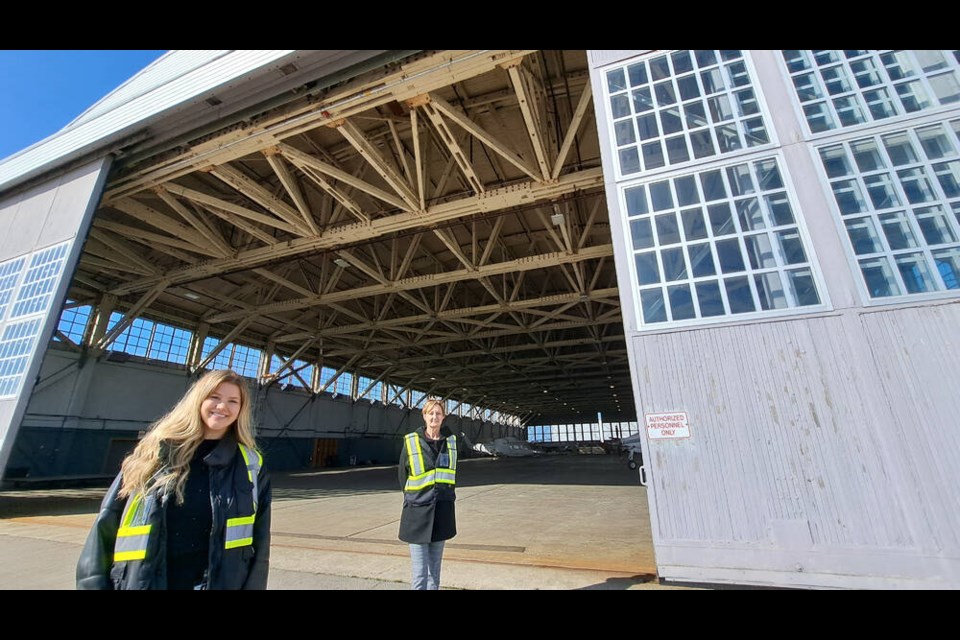Motorists speed by it, a thousand times a day, with few being aware of the role the little airport played during the Second World War, 80 years ago.
Back then, beginning in April 1941, before it got its current name, Boundary Bay Airport was known as Royal Canadian Air Force Station Boundary Bay.
Pilots were needed for the war effort and the air force needed a place to train them before sending them into battle flying B24 Liberator and B25 Mitchell bombers to pound Japanese forces.
While April is an anniversary for the airport, it’s also a major milestone for the Royal Canadian Air Force, which celebrated its 100th year on April 1.
The airport is saluting that event and drawing attention to RCAF history by filling three display cases in the main terminal with air force artifacts from that time.
For the rest of the month, the displays in the main terminal will be filled with mementoes, uniforms, badges, photos and even a flimsy parachute that show the RCAF’s contribution.
In addition, there’s a huge touch screen that people can use for in-depth details about the airport’s beginnings.
Everyone is welcome to stop by and read up on the military’s role in forming the airport.
As well, there will be a commemoration of the air force’s centennial at the Boundary Bay Airshow this July 13.
Julia Rieberger, administrative coordinator with Alpha Aviation, which manages the airport, said she has learned about more local history in the last months weeks putting together the display than she did in high school or university.
The station was home to No. 5 Operational Training Unit, one of the largest bomber flight-training schools in the British Commonwealth Air Training Plan where pilots, instructors and mechanics and support crew all worked to help the war effort in distant lands.
That unit operated for about 16 months and pushed through about 4,500 air crew which learned navigation and practised firing against would-be fighters, as well as day and night bombing practice. According to the history plaques outside the airport, the bombing practice took place south of the B.C Ferries terminal, offshore of Tsawwassen.
“A tiny little corner of the world with lots of history packed in,” said Rieberger. “I think many people in the area probably have a similar experience as I do, is just having no idea this history exists so close to home.”
In addition to memorabilia, there’s one huge artifact that remains from those days.
The heritage hangar was built in 1941 and is still operational and is a favourite for movie shoots.
“You can imagine this being filled with Liberators (bombers). It was a busy place at that time,” said Rieberger. “There was so much here. There was a whole community out here. To still have this piece of history, although it does require a lot of maintenance, it’s a neat landmark for sure.”
Kathy Delisser, general manager of Alpha Aviation, said the history “is something to be proud of, as the Lower Mainland, we were able to support the Canadian effort and the RCAF and they’re 100 years old, as of today.
“It’s just creating the awareness of how rich our history is and it’s something to be proud of.”
While the airport was a beehive of activity during the war, when peace was declared, tranquility dropped dramatically back on to Boundary Bay.
After Japan surrendered in September 1945, the training unit was disbanded two months later, on Oct. 31.
Commander J.B. Williamson said on that day, that all aircraft had been sent to Abbotsford and that all flying had ceased at Boundary Bay.
“Soon the peace and quiet of the grave will settle over this once busiest of stations.
“No. 5 Operational Training Unit officially died at midnight tonight,” he wrote.



